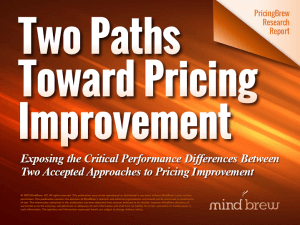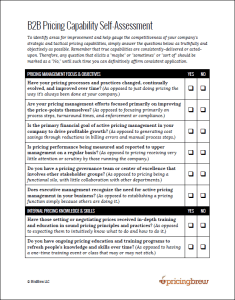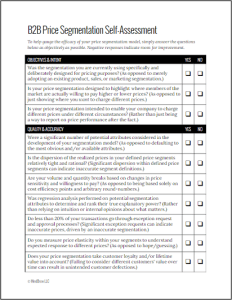For those who may not be familiar, a “pricing maturity model” is something that academics and consultants will often use to assess and describe a company’s pricing capabilities. Of course, these models come in many different flavors, but they usually consist of 4 or 5 ascending levels, ranging from basic or ad-hoc capabilities to advanced or even “visionary” capabilities.
In general, these types of descriptive models can be helpful in determining where you stand and how your capabilities stack up. And, they can even be beneficial for illuminating where you need to get to and illustrating the capabilities you should aspire to possess.
However, as discussed in Two Paths Toward Pricing Improvement, there’s a big problem with how some are leveraging pricing maturity models…
All too often, the ascending levels of pricing capability in a maturity model are viewed as being far more than mere descriptors. In many cases, these descriptive levels are being perceived as development stages that must be traversed in a step-by-step fashion, over some longer period of time.
The term “maturity model” probably contributes to this misperception, as we all know that we can’t “mature” to adulthood without first being a baby, then a child, then a teenager…ugh!
In any case, when you look at a maturity model as a development roadmap, the implication is that you must go through each of the levels in sequence. The implication is that if you’re currently at Level 1, then your next development objective must be Level 2. The implication is that to get to Level 5, you must progress through all of the other levels first.
And that is simply not the case…
Today, thanks to advanced technologies and ever-increasing access to knowledge and best-practices, companies are achieving advanced pricing capabilities while effectively “skipping” many of the traditional maturity model levels. With the right tools and approaches, a motivated company that is just getting started with pricing can aim for the most advanced pricing capabilities…and achieve them in relatively short order.
The point is that using a pricing maturity model as a development roadmap is extremely limiting, because it fails to leverage advances in technology and the experiences of those who have gone before. As stated in Two Paths Toward Pricing Improvement:
Following a maturity model is like telling a developing country that they shouldn’t implement cellular networks until they’ve mastered the telegraph.
Don’t assume that you have to “crawl, walk, run.” Today, it’s definitely possible to “hit the ground running.”













